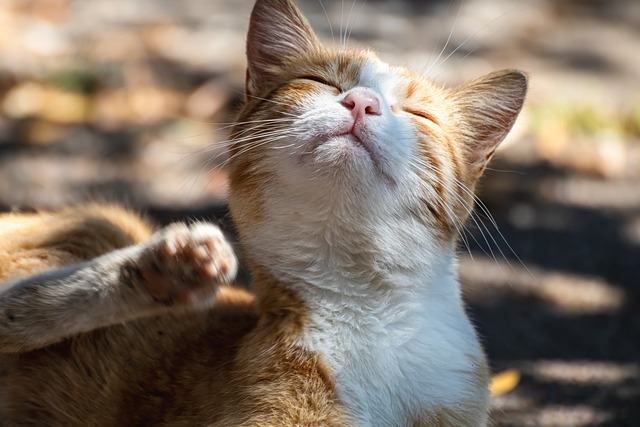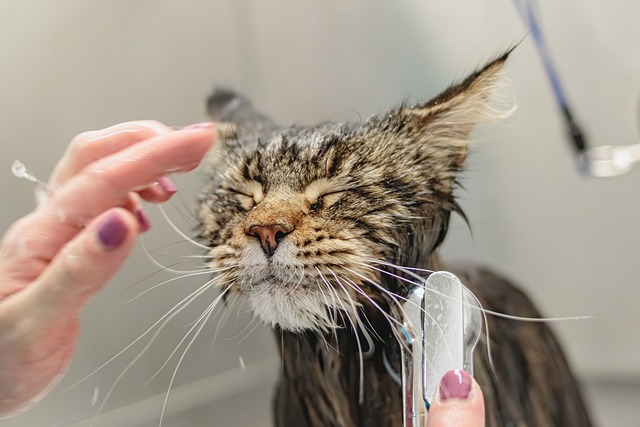Let’s get right into it. You came here to learn about cat fleas and what you can do about them because they’re either making your feline companion miserable or they’re in the clear now and you don’t want them to come back! Keep reading for full details and what are your prevention and treatment options.
Yes, There’s a Difference Between Cat and Dog Fleas!
Cat fleas (Ctenocephalides felis) are common blood-sucking parasites that afflict cats globally, causing discomfort and posing health risks. With their agility and rapid reproduction, cat fleas swiftly infest homes, necessitating effective flea control. Similarly, dog fleas (Ctenocephalides canis) share similarities with cat fleas but exhibit slight differences. While both can infest cats and dogs, cat fleas have a stronger affinity for felines, while dog fleas primarily target canines. Physically similar, cat fleas are slightly smaller and more prevalent, often found in households with cats, while dog fleas are less common. Both species can trigger flea allergy dermatitis and transmit diseases, albeit with varying severity and prevalence.

Fleas Can Be Dangerous For Cats For Several Reasons:
Skin Irritation and Allergies: Flea bites can cause intense itching and irritation in cats. Some cats may even develop an allergic reaction to flea saliva, leading to severe skin inflammation and discomfort. Some cats are hypersensitive to flea bites, meaning even a small number of fleas can cause severe itching and discomfort. This condition may require aggressive flea control measures to provide relief for the affected cat. Corticosteroids are effective in providing immediate relief for cats suffering from intense itching due to flea allergy dermatitis (FAD). Always consult with your veterinarian before choosing a medication!
Anemia: In severe infestations, fleas can consume enough blood to cause anemia in cats, especially in kittens or elderly cats. Anemia can lead to weakness, lethargy, and even death if left untreated.
Transmission of Diseases: Fleas can transmit various diseases and parasites to cats through their bites. Examples include bartonellosis (cat scratch fever), tapeworms (via ingestion of infected fleas), and hemoplasmosis (a blood parasite).
Secondary Infections: Constant scratching due to flea bites can lead to open wounds on the skin, which can become infected with bacteria. These secondary infections can worsen the cat’s condition and require veterinary treatment.

So, What Can You Do About Cat Fleas?
Regular grooming, including flea baths, can certainly help in managing flea infestations in cats, but it’s not always sufficient as a standalone solution.
Here’s how flea baths can help:
Immediate Relief: Flea baths can provide immediate relief by drowning and removing fleas from the cat’s fur. Specialized shampoos formulated to kill fleas on contact are available, but it’s essential to use products specifically designed for cats. Collar Cuts Mobile Grooming has flea bath services available for your beloved cats! Contact us to book an appointment.

Reducing Flea Population: Regular grooming, including flea baths, helps reduce the flea population on the cat’s body. Removing adult fleas before they have a chance to lay eggs can help break the flea life cycle and prevent further infestations.
Checking for Fleas: During grooming sessions, you or your groomer can closely inspect your cat’s fur for signs of fleas, such as flea dirt (small black specks resembling pepper) or actual fleas moving around. Early detection allows for prompt treatment, minimizing the chances of a severe infestation.
However, it’s essential to complement flea baths with other preventive measures for effective flea control:
Flea Prevention Products: Use veterinarian-recommended flea prevention products such as topical treatments, oral medications, or flea collars. These products provide longer-lasting protection against fleas by killing adult fleas and disrupting their life cycle. Maintain the regimen year-round, as fleas can be present in various climates and seasons.
Environmental Control: Treat your cat’s living environment, including bedding, carpets, and furniture, with flea control products or seek professional pest control services to eliminate fleas and their eggs from the surroundings.
By combining regular grooming, flea baths, and other preventive measures, you can effectively manage and control flea infestations in cats, ensuring their health and well-being.
Sources:
Purdue.edu
petmd.com
wagwalking.com
Yourpetandyou.elanco.com
vcahospital.com
openai.com

